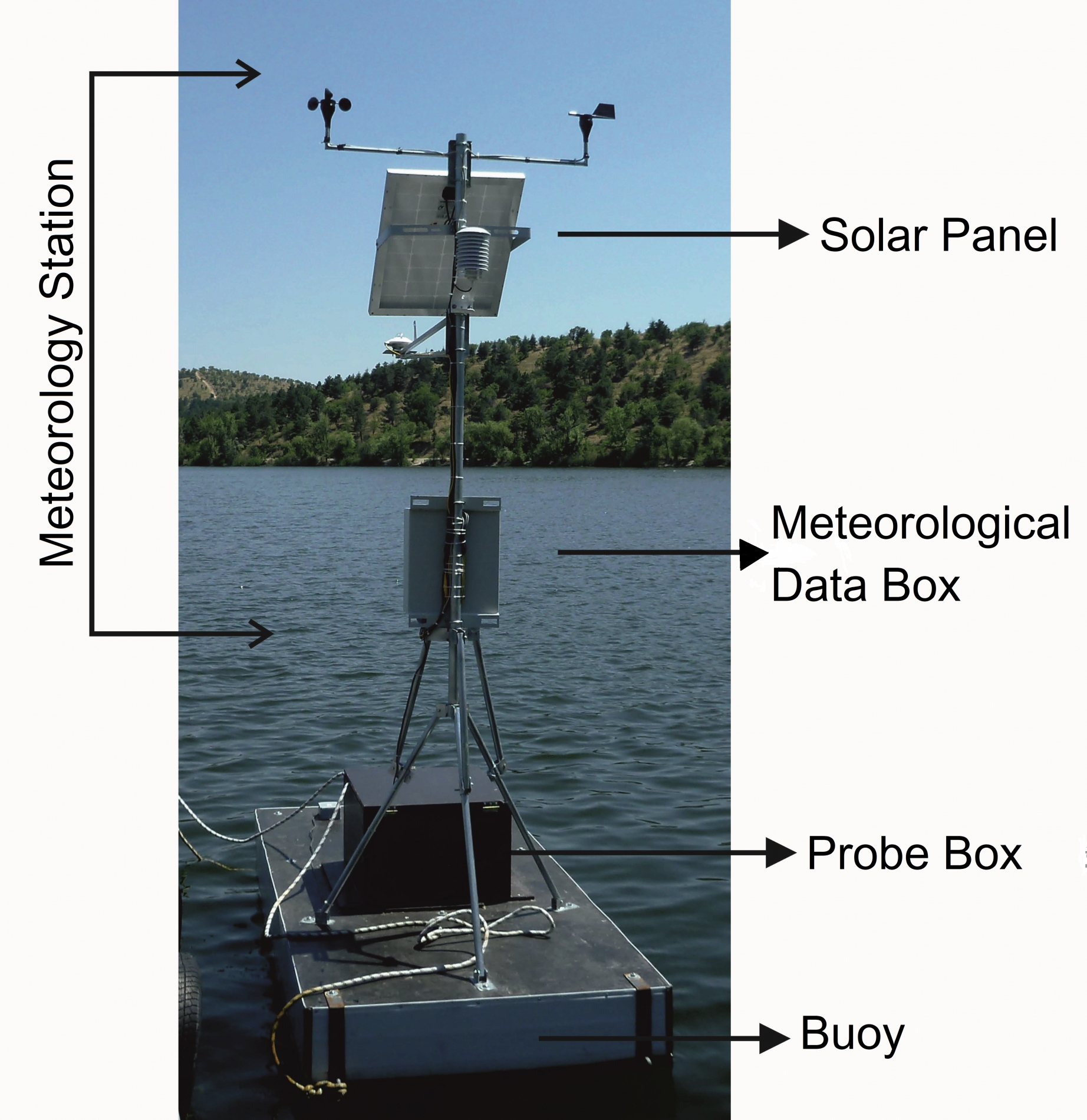
Water is an essential resource for all living things. Freshwater, which is a limited resource in water resources, has significant ecological and economic importance. However, the increasing need for freshwater and irregular wastewater management creates negative pressure on lakes. Besides, lakes face numerous problems due to the growing climate change effects and eutrophication in recent years. It is crucial to have long-term data on lakes to prevent these problems, to take precautions beforehand, and to understand the instant changes that occur. Real-time on-site water quality parameter measurements are the primary solution point to meet long term data needs.
In this context, a real-time automatic lake monitoring system was established in January 2015 in Lake Eymir to investigate the change of lake metabolism and phytoplankton biomass according to extreme events and environmental variables. The installation of the system was carried out by TUBITAK within the scope of NETLAKE COST activity and was supported until December 2017.
The system measures the water temperature, depth, turbidity, conductivity, dissolved oxygen, pH, total algae (chlorophyll-a and cyanobacteria), and fluorescent dissolved matter and organic matter parameters vertically and automatically at the point where it is fixed (the deepest point of the lake). It also records the parameters of air temperature, wind direction and intensity, pressure, and solar radiation with the help of the weather station. With this system, the water quality parameters of Eymir Lake are monitored in real-time, and the instant changes in the lake ecosystem are followed. The measured parameters such as the meteorological changes (sudden temperature increases, floods, heatwaves, drought, downpours, sudden pressure changes, etc.) and environmental variables (e.g., nutrient salt, salinity, alkalinity, etc.), make it possible to relate to lake metabolism and primary production and to determine their effects. In this way, the results caused by sudden changes in the lake ecosystems (oxygen depletion, excess phytoplankton increase, cyanobacteria excess increases, etc.) can be defined, and development of strategies to protect against these effects can be provided.
In addition to the meteorology measurement box, there are two probes (one at 2 meters and one at 4 meters) in the system. In addition to these, we also have temperature measuring devices placed in the entire water column at equal intervals. The measured data are given in the table below. Every device in the system receives data every 10 minutes. These data can be transferred to the computer over the internet via modem. Besides, the devices are maintained by visiting Eymir Lake in every week.
| Weather station | Probe 1 (2 meters) | Probe 2 (4 meters) |
|
Wind speed m / s (maximum, minimum, average) Wind Direction (degrees) Air Temperature (° C) Relative humidity (%) Barometric Pressure (mbar) Solar radiation (W / m2) |
Oxidation Reduction Potential (mV) pH Color Dissolved Organic Matter (RFU, QSU) Dissolved oxygen (%, mg / L) Chlorophyll-a (RFU, µg / L) Blue-green algae fixocyanin (RFU, µg / L) Turbidity (FNU) Total Suspended Solids (mg / L) Lake Temperature (° C) Conductivity (µS / cm) Specific conductivity (µS / cm) Salinity (psu) Total dissolved solids (mg / L) Pressure (psi) Depth (m) |
pH Dissolved Oxygen (%, mg / L) Chlorophyll-a (RFU, µg / L Lake Temperature (° C) Conductivity (µS / cm) Specific conductivity (µS / cm) Salinity (psu) Total dissolved solids (mg / L) Depth (m) |
